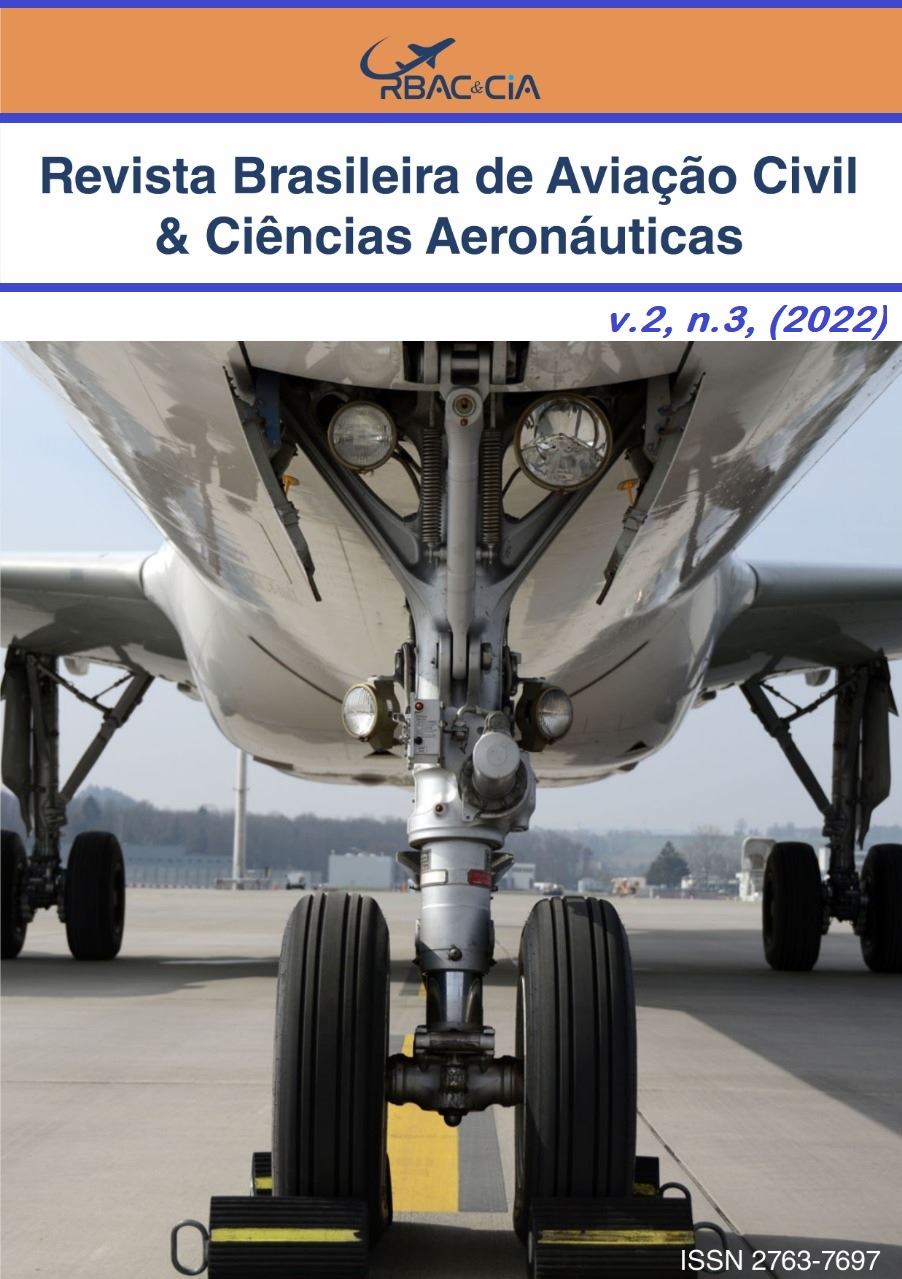O IMPACTO DA BAIXA VISIBILIDADE EM APROXIMAÇÕES, POUSOS E DECOLAGENS CAUSADO POR CONDIÇÕES CLIMÁTICAS ADVERSAS E OS SEUS RISCOS PARA A SEGURANÇA OPERACIONAL NO AEROPORTO DE PORTO ALEGRE/RS THE IMPACT OF LOW VISIBILITY ON APPROACHES, LANDINGS AND TAKEOFF CAUSED BY ADVERSE WEATHER CONDITIONS AND THEIR RISKS TO OPERATIONAL SAFETY AT THE AIRPORT OF PORTO ALEGRE/RS
Conteúdo do artigo principal
Resumo
Nos aeroportos, as condições climáticas adversas ocasionam em especial a baixa visibilidade, que prejudicam as operações aéreas, pois afetam diretamente a ângulo de visão, condição necessária para que os pilotos consigam realizar, com segurança, procedimentos de pousos, decolagens e movimentações em solo. O objetivo do presente trabalho foi investigar e analisar os efeitos de condições climáticas adversas nas operações de aproximação, pouso e decolagem no Aeroporto Internacional Salgado Filho. Este trabalho pode ser caracterizado como uma pesquisa qualitativa, que a partir dos dados analisados pode avaliar as condições de pousos e decolagens e o que precisa ser melhorado no Aeroporto Internacional Salgado Filho, para se evitar maiores atrasos e acidentes por conta de baixa visibilidade. Foi realizada uma análise das características estruturais e ambientais do Aeroporto Internacional Salgado Filho, com análise de dados climatológicos históricos dos últimos 10 anos da região de Porto Alegre, através do site do Instituto Nacional de Meteorologia (INMET). Verificou-se que a ocorrência ou não de nevoeiro, e diversas outras condições meteorológicas podem ser decisivas para que as atividades aeronáuticas tenham um bom desempenho, de tal modo que se essas condições sejam desfavoráveis, o transporte aéreo pode sofrer diversos riscos. Foi possível concluir que a melhor opção para melhorar as condições de pouso quando há baixa visibilidade causada por nevoeiros, seria a implantação do equipamento ILS - categoria III, pois este possui um sistema que é o mais preciso para orientação vertical e lateral para pousos.
ABSTRACT
In airports, adverse weather conditions, in particular, cause low visibility, which impairs air operations, as they directly affect the angle of view, a necessary condition for pilots to be able to safely perform landing, take-off and ground handling procedures. The objective of the present work was to investigate and analyze the effects of adverse weather conditions on approach, landing and take-off operations at Salgado Filho International Airport. This work can be characterized as qualitative research, which from the analyzed data can evaluate the conditions of landings and takeoffs and what needs to be improved at Salgado Filho International Airport, to avoid further delays and accidents due to low visibility. An analysis of the structural and environmental characteristics of the Salgado Filho International Airport was carried out, with analysis of historical climatological data from the last 10 years in the Porto Alegre region, through the website of the National Institute of Meteorology (INMET). It was verified that the occurrence or not of fog, and several other meteorological conditions can be decisive for the aeronautical activities to have a good performance, in such a way that if these conditions are unfavorable, the air transport can suffer several risks. It was possible to conclude that the best option to improve landing conditions when there is low visibility caused by fog would be the implementation of ILS equipment - category III, as it has a system that is the most accurate for vertical and lateral guidance for landings.
Downloads
Detalhes do artigo

Este trabalho está licenciado sob uma licença Creative Commons Attribution 4.0 International License.
